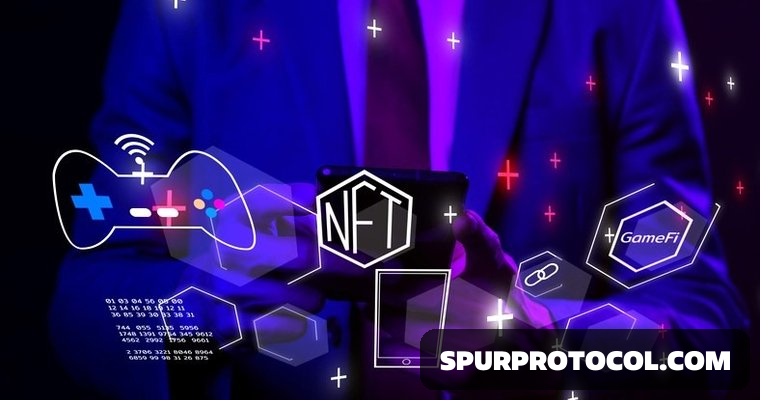The Future Of Blockchain In Gaming And The Metaverse
The world of gaming is on the verge of an exciting transformation, powered by blockchain technology. As the gaming industry evolves, blockchain has the potential to redefine the way games are developed, played, and experienced. One of the most exciting developments in this space is the integration of blockchain into the emerging metaverse, a virtual world where users interact, create, and transact in a decentralized environment. In this article, we explore how blockchain is shaping the future of gaming and the metaverse.
Go Back

🕒 8:30 PM
📅 Jan 17, 2025
✍️ By SpurProtocol
Blockchain in Gaming: A New Era of Ownership and Control
Traditionally, in-game assets—such as weapons, skins, and avatars—are owned by game developers and cannot be transferred outside of the game itself. Blockchain technology is changing this by enabling true ownership of digital assets. Through non-fungible tokens (NFTs), players can now truly own, buy, sell, and trade in-game items across different platforms.
NFTs represent a game-changing shift, allowing digital goods to be verifiably scarce and unique. This means that players can invest in their in-game assets, turning gaming into a potential source of income. Games like Decentraland and Axie Infinity have already embraced this concept, allowing users to buy virtual land or creatures as NFTs and trade them on blockchain-based marketplaces.
Blockchain and the Metaverse: A Seamless Integration
The concept of the metaverse is not new, but blockchain technology is what makes it truly decentralized and interoperable. The metaverse will be a collection of virtual worlds, platforms, and experiences where users can interact with one another and their surroundings in real time. By utilizing blockchain, users can carry their digital assets, identities, and achievements across different metaverse platforms.
Blockchain ensures that data within the metaverse is immutable, transparent, and secure. This allows players to maintain control over their personal data, digital assets, and even the rules that govern the virtual world. Furthermore, smart contracts on blockchain networks can automate transactions, governance, and interactions in the metaverse, making the entire ecosystem more efficient and decentralized.
The Potential Impact on Game Developers and Players
For game developers, blockchain offers new revenue streams. Developers can create games where players have financial incentives to participate, whether through the sale of NFTs, the use of native game tokens, or decentralized governance. Blockchain also enables a more transparent approach to game mechanics, allowing players to see the true scarcity and value of digital goods.
For players, blockchain in gaming and the metaverse provides a way to earn real-world value from their in-game activities. Players can monetize their skills, trade virtual items, and even build careers as virtual landowners or content creators within decentralized virtual worlds.
Challenges and Considerations
While the potential of blockchain in gaming and the metaverse is immense, there are challenges that need to be addressed. Scalability is one of the major hurdles, as current blockchain networks struggle to handle the high volume of transactions needed for real-time gaming. Additionally, ensuring the security of virtual assets, preventing fraud, and protecting players from scams are critical concerns that must be tackled as the industry evolves.
The energy consumption of blockchain networks is another issue, particularly in games that rely on proof-of-work consensus mechanisms. However, as more eco-friendly consensus mechanisms, such as proof-of-stake, gain popularity, these challenges may be mitigated.
In Short
Blockchain technology is revolutionizing the way games are created, played, and experienced. By providing true ownership of in-game assets, enabling interoperability across virtual worlds, and creating decentralized economies, blockchain is laying the foundation for the future of gaming and the metaverse. While there are challenges to overcome, the integration of blockchain in these spaces promises to reshape the entertainment industry and create new opportunities for both players and developers.
References:
